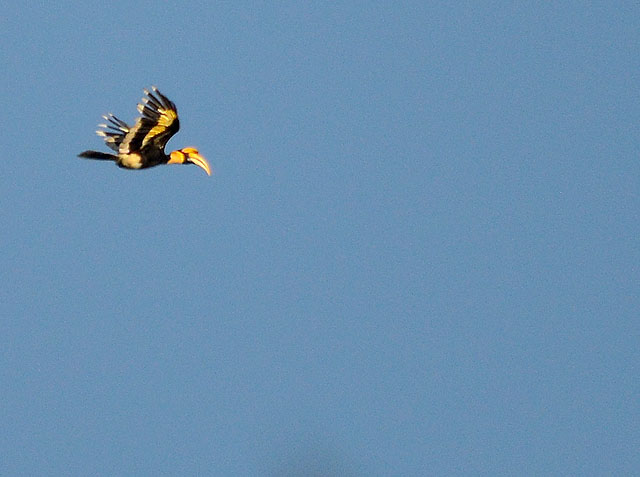Birding is full of surprises.
Some are good and others are not. My two most recent tours fall short of
expectations and it was even possible to combine them into a single blog posting.
I always remind myself that I am dealing with completely wild and free subjects
that do not necessary bend to the will of Man. It offers some relief but it is
still disheartening not to be able provide a complete birding experience for my
foreign guests. My first outing took me and my Singaporean guest to the
mangroves of Sungai Batu in Kedah state. It started off well enough with
another mesmerising performance by the resident Mangrove Pitta. It was a new
species for my guest and naturally, the encounter was memorable.
The inquisitive Abbott’s
Babblers were the supporting cast at this swampy domain as they went about
their daily routine cheerfully. In fact if I am not mistaken, one of the field
guides even describes the call of this non-descript babbler as “three-cheers-for-you”.
A few other regulars of this
birding site helped to make the visit enjoyable and exciting. We then decided
to try our luck elsewhere and that was when this half-day excursion began to
slide downhill. Strong winds days before again caused havoc to the Air Hitam Educational
Forest uprooting trees. It is unbelievably quiet today and the birds that were
present were just simply being difficult. A Olive-winged Bulbul foraging at the
car park area was given full attention as it was one of the few birds that
managed to find its way into my memory card.
The only other species worth
mentioning was the Greater Racket-tailed Drongo. A parent bird was showing an
immature bird the ropes and their confiding nature was certainly the highlight
of the visit here.
There were only subtle
differences between the adult and the youngster. The latter’s present signified
another successful season for this species here. Soon, it will attain its adult
plumage and hopefully, live a fruitful life at this swampy domain. It was also
the last bird of the trip. Air Hitam Dalam seldom disappoints but today it did.
For my second outing, I found
myself and my Australian guests in the pristine forest surrounding Pedu Lake in
Kedah. The weather was ideal and the lush landscape was as enchanting as
always. However, the birds were far and few. Common but beautiful species that
regular greet my visiting guests were no where to be seen. White-bellied Munias
and Crested Jays could have lifted the trip had they been a little more obliging.
My saviour of the visit here did not come from the trees above but from the undergrowth.
A Black-capped Babbler strolling next to a forest trail provided the only
photographic opportunity for me at this site. A far from perfect shot but it
captured the true essence of this terrestrial skulker.
It is always good to have a
contingency plan and the feathered denizens of Sungai Batu mangroves have
always had my back. But to my dismay, the star bird was absent today. The
return of the Puff-throated Babblers, which were not present during my last few
visits, could not fully compensate my failure to locate the Mangrove Pitta. Today
has been one of the toughest tours I have to conduct. Not so much physically
but emotionally. This past two days has been truly testing times but it is
something that comes with the job.
The resident pair of Mangrove
Blue-Flycatchers provided much-needed colours to our visit here despite the
male looking far from his best.
Our last destination of the
trip was the swamp forest of Air Hitam Dalam. Owls happened to be a favourite
with my guests and my efforts to locate the roosting Spotted Wood-owls of this
birding spot fell flat – inevitably. A confiding Black-and-red Broadbill helped
save the trip from being a total let down and whatever pride I had left. Vivid
colouration and looking absolutely lovable, this beautiful bird will always be
a big hit among my guests.
While making our way back to
the car, we were intercepted by a flock of Pin-striped Tit-babblers. Arboreal
babblers are usually a nightmare for photography and just to follow the
movement of these little birds was a challenge. Perhaps sensing our dismay, one
individual decided to remained put long enough for us to capture a couple of reasonable
photos before it went back into hyper mode. Considering our luck today, I was
grateful for the little guy’s contribution.












































